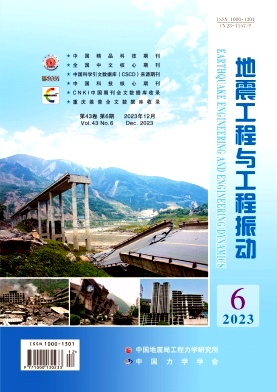ASSESSMENT OF THE RESPONSE ENVELOPE OF REINFORCED CONCRETE MEMBERS WITH DIFFERENT FAILURE MODES
引用次数: 0
Abstract
The expected lateral response of reinforced concrete (RC) elements strongly depends on their failure mode. Code-conforming RC members are supposed to exhibit a flexural (F) ductile failure, with complete exploitation of their post-peak displacement/deformation capacity. However, substandard RC elements, which are typical of existing structures, may undergo a shear failure after yielding (FS) or even before yielding (S) of longitudinal reinforcement. In this case, the element is classified as “shear - sensitive” and may be characterized by an abrupt collapse after the attainment of the peak load-capacity, with a fast loss of lateral load-bearing capacity up to the onset of the progressive reduction of the axial load-bearing capacity. This condition may trigger structural collapse, as also shown from surveys of damages due to strong earth-quakes in past and recent times. So, the determination of the failure mode of RC members is paramount for a reliable assessment of the seismic safety of structures. In general, static criteria are applied to pre-classify the expected failure mode of RC members and their response backbone is defined dependently on the determined failure mode. However, a comprehensive approach for modelling, with a unique set of predictive equations, the response envelope of RC members without pre-determining with a deterministic approach their failure mode is missing. In this paper membership functions are defined to determine for RC columns the possibility that they exhibit an F, an FS, or an S failure. A set of basic predictive equations are defined, based on experimental data, to define a multilinear response envelope. The proposed equations may be combined with membership functions to use a unique set of equation able to reproduce the behaviour of RC columns with different expected failure modes.不同破坏模式下钢筋混凝土构件响应包络线的评估
钢筋混凝土(RC)构件的预期侧向响应很大程度上取决于其破坏模式。符合规范的钢筋混凝土构件应该表现出弯曲(F)延性破坏,并完全利用其峰后位移/变形能力。然而,在现有结构中,不合格的钢筋混凝土单元可能在纵向钢筋屈服后(FS)甚至在屈服前(S)发生剪切破坏。在这种情况下,该单元被归类为“剪切敏感”,其特征可能是在达到峰值承载能力后突然倒塌,横向承载能力迅速丧失,直至轴向承载能力开始逐步降低。这种情况可能会引发结构坍塌,这一点从过去和最近的强震造成的破坏调查中也可以看出。因此,钢筋混凝土构件破坏模式的确定对于结构抗震安全性的可靠评估至关重要。一般采用静力准则对钢筋混凝土构件的预期破坏模式进行预分类,并根据确定的破坏模式定义构件的响应骨干。然而,一个综合的建模方法,与一组独特的预测方程,RC构件的响应包络没有预先确定与确定性的方法,他们的破坏模式是缺失的。在本文中定义的成员函数,以确定为RC列的可能性,他们表现出一个F,一个FS,或一个S失败。在实验数据的基础上,定义了一组基本的预测方程来定义多线性响应包络。提出的方程可以与隶属函数相结合,使用一组独特的方程,能够再现具有不同预期破坏模式的RC柱的行为。
本文章由计算机程序翻译,如有差异,请以英文原文为准。
求助全文
约1分钟内获得全文
求助全文

 求助内容:
求助内容: 应助结果提醒方式:
应助结果提醒方式:


